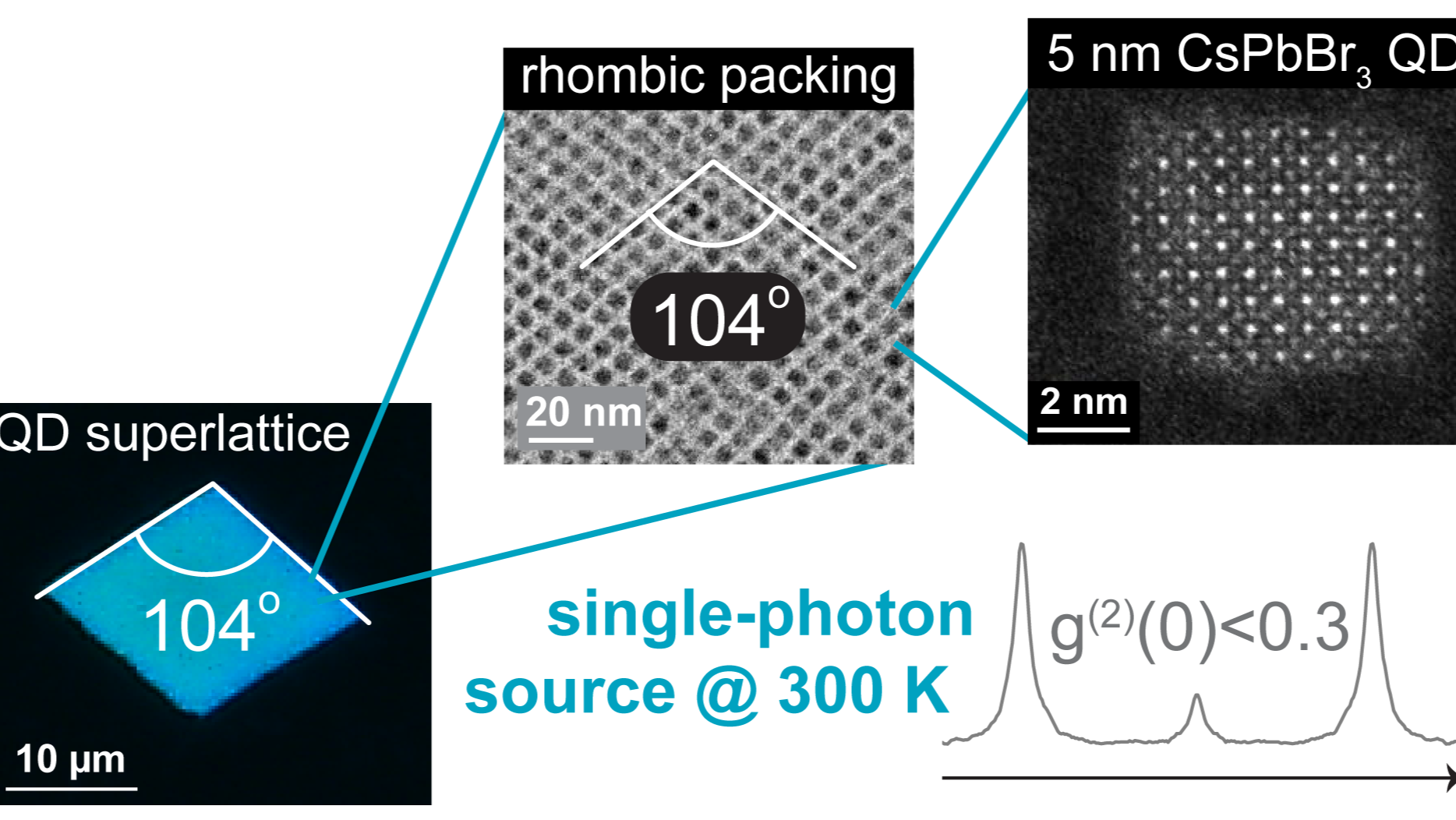Strongly Confined CsPbBr3 Quantum Dots as Quantum Emitters and Building Blocks for Rhombic Superlattices
Simon Boehme a, b, Maryna Bodnarchuk a, b, Max Burian c, Federica Bertolotti d, Ihor Cherniukh a, b, Caterina Bernasconi a, b, Chenglian Zhu a, b, Rolf Erni i, Heinz Amenitsch e, Denys Naumenko e, Hordii Andrusiv a, b, Nazar Semkiv a, b, Rohit Abraham John a, b, Alan Baldwin f, g, Krzystof Galkowski f, Norberto Masciocchi d, Samuel Stranks f, g, Gabriele Rainò a, b, Antonietta Guagliardi h, Maksym Kovalenko a, b
a ETH Zürich, Department of Chemistry and Applied Biosciences, CH-8093, Zurich, Switzerland
b Empa-Swiss Federal Laboratories for Materials Science and Technology, CH-8600, Dübendorf, Switzerland
c Swiss Light Source, Paul Scherrer Institut, Villigen PSI, 5232 Switzerland
d Department of Science and High Technology and To.Sca.Lab., University of Insubria, via Valleggio 11, 22100 Como, Italy, Via Valleggio, 11, Como, Italy
e Institute of Inorganic Chemistry, Graz University of Technology, Stremayrgasse, 9, Graz, Austria
f Cavendish laboratory, University of Cambridge, JJ Thomson Avenue, Cambridge CB30HE, UK.
g Department of Chemical Engineering and Biotechnology, University of Cambridge, Philippa Fawcett Drive, Cambridge CB3 0AS, UK
h Istituto di Cristallografia and To.Sca.Lab, Consiglio Nazionale delle Ricerche, via Valleggio 11, I-22100 Como, Italy
i Laboratory of Thin Films and Photovoltaics, Empa — Swiss Federal Laboratories for Materials Science and Technology, Ueberlandstrasse, 129, Dübendorf, Switzerland
Materials for Sustainable Development Conference (MATSUS)Proceedings of MATSUS23 & Sustainable Technology Forum València (STECH23) (MATSUS23)
#PhotoPero23 - Photophysics of halide perovskites and related materials – from bulk to nano
VALÈNCIA, Spain, 2023 March 6th - 10th
Organizers: Sascha Feldmann, Maksym Kovalenko and Jovana Milic

The success of the colloidal semiconductor quantum dots (QDs) field is rooted in the precise synthetic control of QD size, shape, and composition, enabling electronically well-defined functional nanomaterials that foster fundamental science and motivate diverse fields of applications. While the exploitation of the strong confinement regime has been driving commercial and scientific interest in InP or CdSe QDs, such a regime has still not been thoroughly explored and exploited for lead-halide perovskite QDs, mainly due to a so far insufficient chemical stability and size monodispersity of perovskite QDs smaller than about 7 nm. Here, we demonstrate chemically stable strongly confined 5 nm CsPbBr3 colloidal quantum dots via a post-synthetic treatment employing didodecyldimethylammonium bromide ligands. The achieved high size monodispersity (7.5%±2.0%) and shape-uniformity enables the self-assembly of QD superlattices with exceptional long-range order, uniform thickness, an unusual rhombic packing with an obtuse angle of 104º, and narrow-band cyan emission. The enhanced chemical stability indicates the promise of strongly confined perovskite QDs for solution-processed single-photon sources, with single QDs showcasing a high single-photon purity of 73% and minimal blinking (78% “on” fraction), both at room temperature.
© FUNDACIO DE LA COMUNITAT VALENCIANA SCITO
